Abstract
The author describes a new method for estimating the daily egg output from patients with Schistosoma mansoni infestation. It is suggested that this method—which combines faecal dilution, concentration by filtration and staining of the eggs with ninhydrin—is sufficiently accurate and sensitive to allow the results of treatment to be expressed as the percentage reduction in egg output rather than in the somewhat misleading terms of the “cure rate” usually adopted at present. The author also discusses the theoretical and practical advantages of this approach to the evaluation of treatment.
Full text
PDF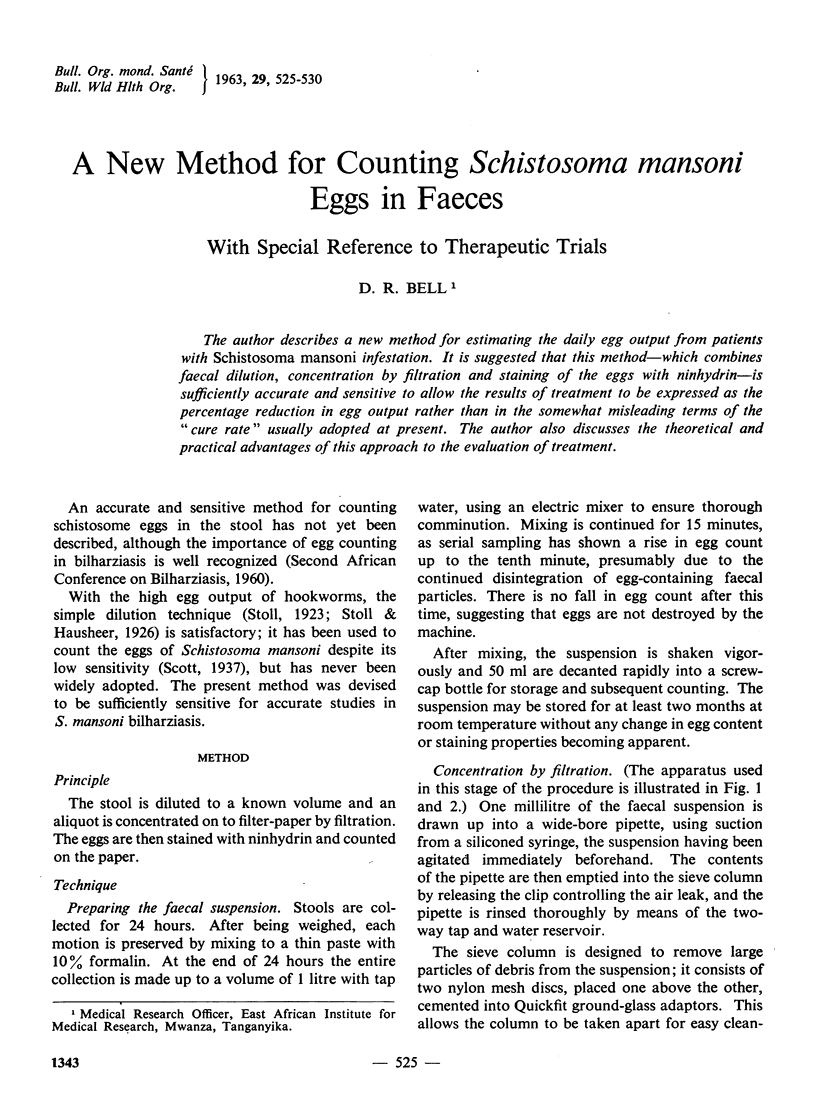
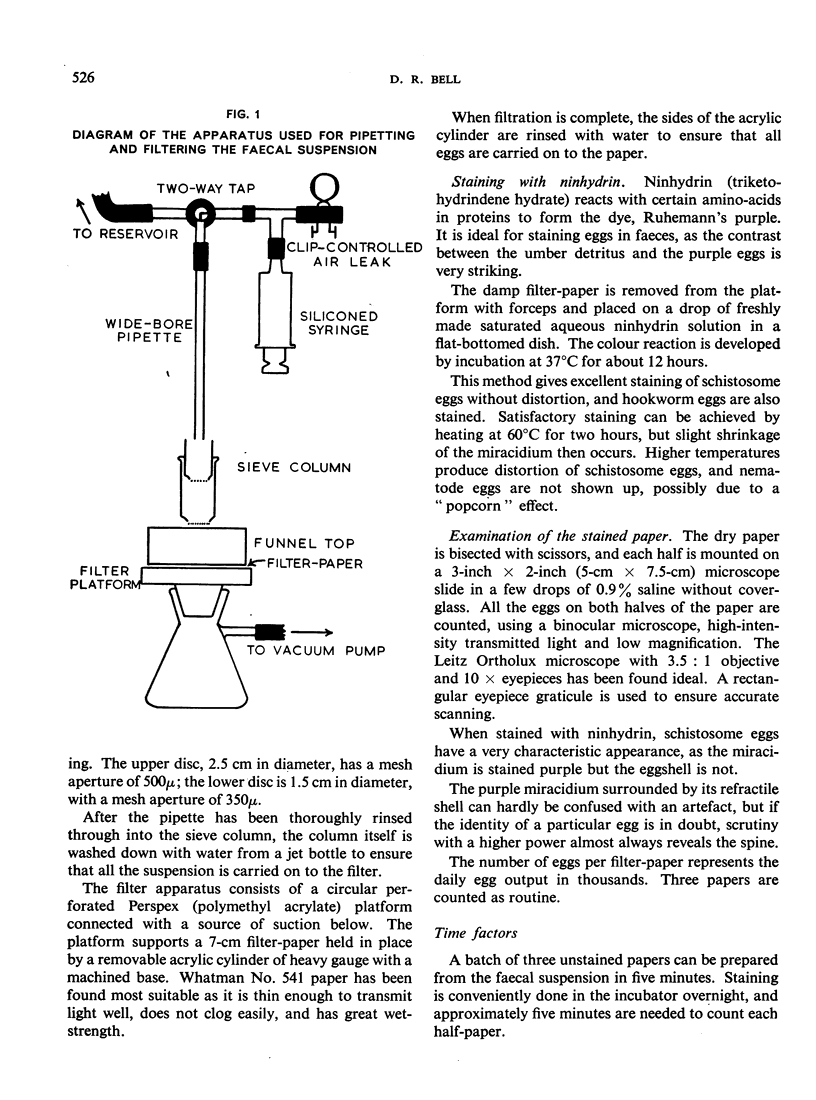
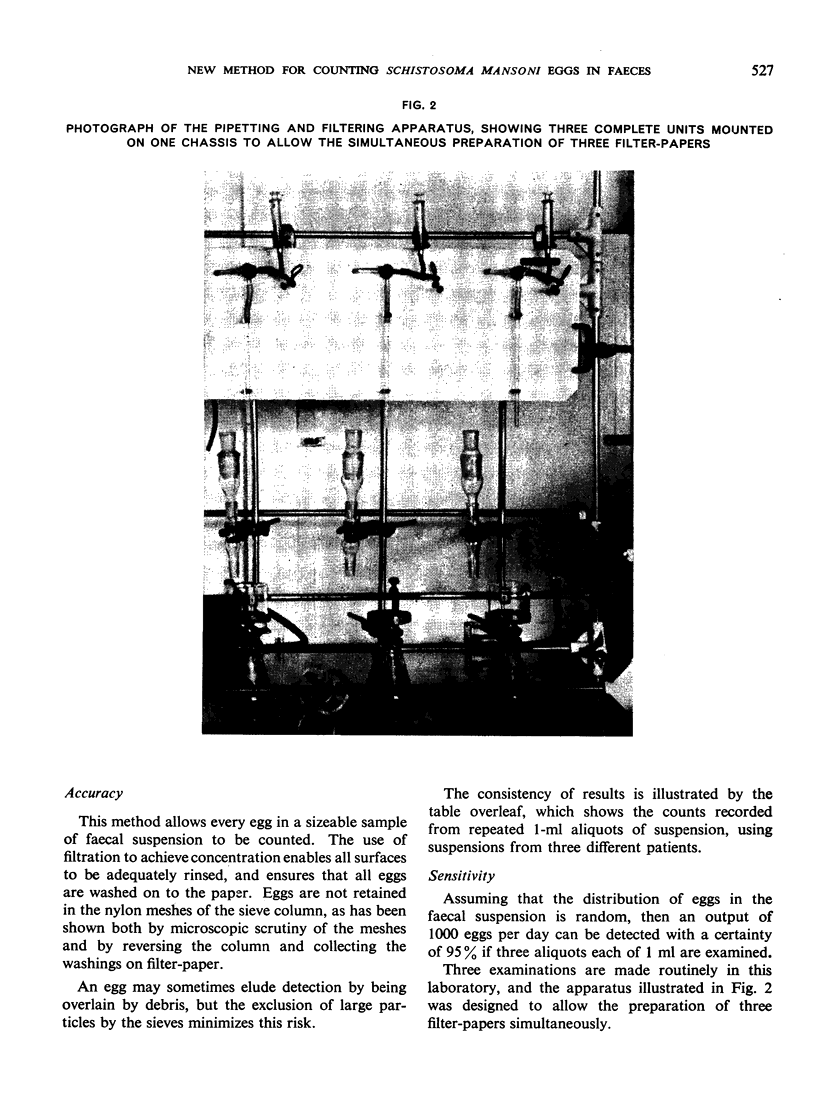

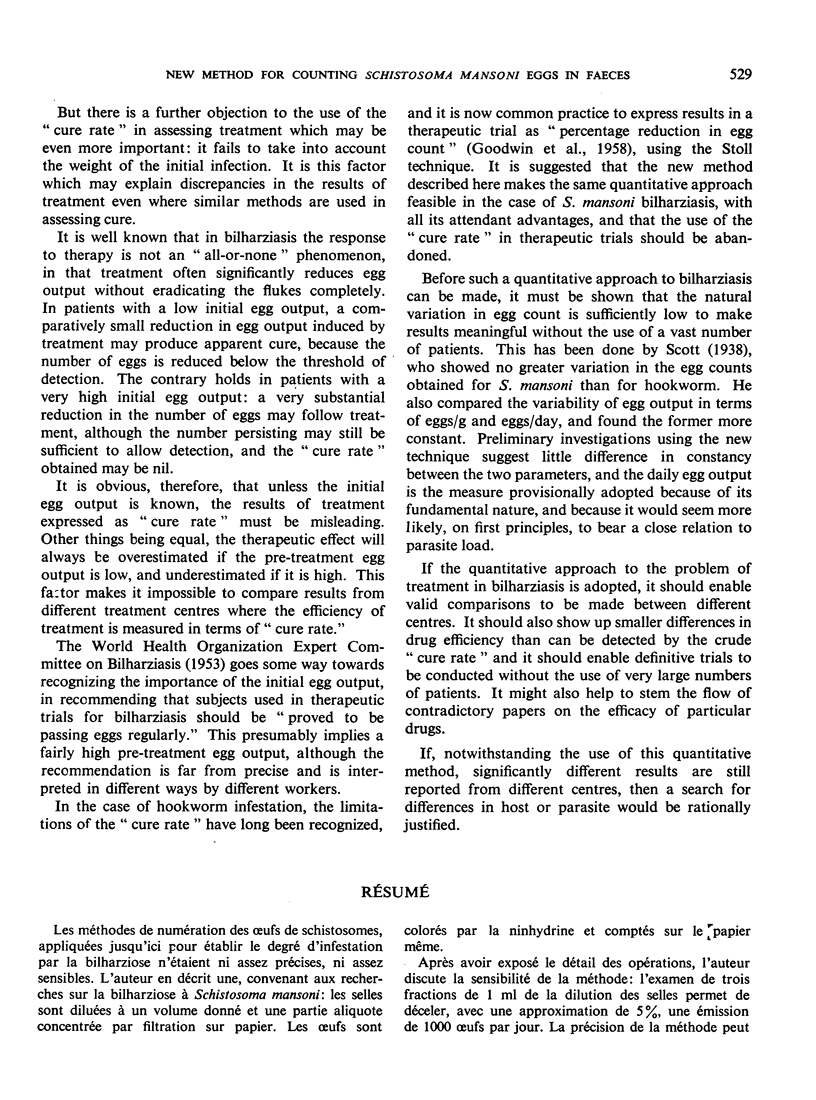
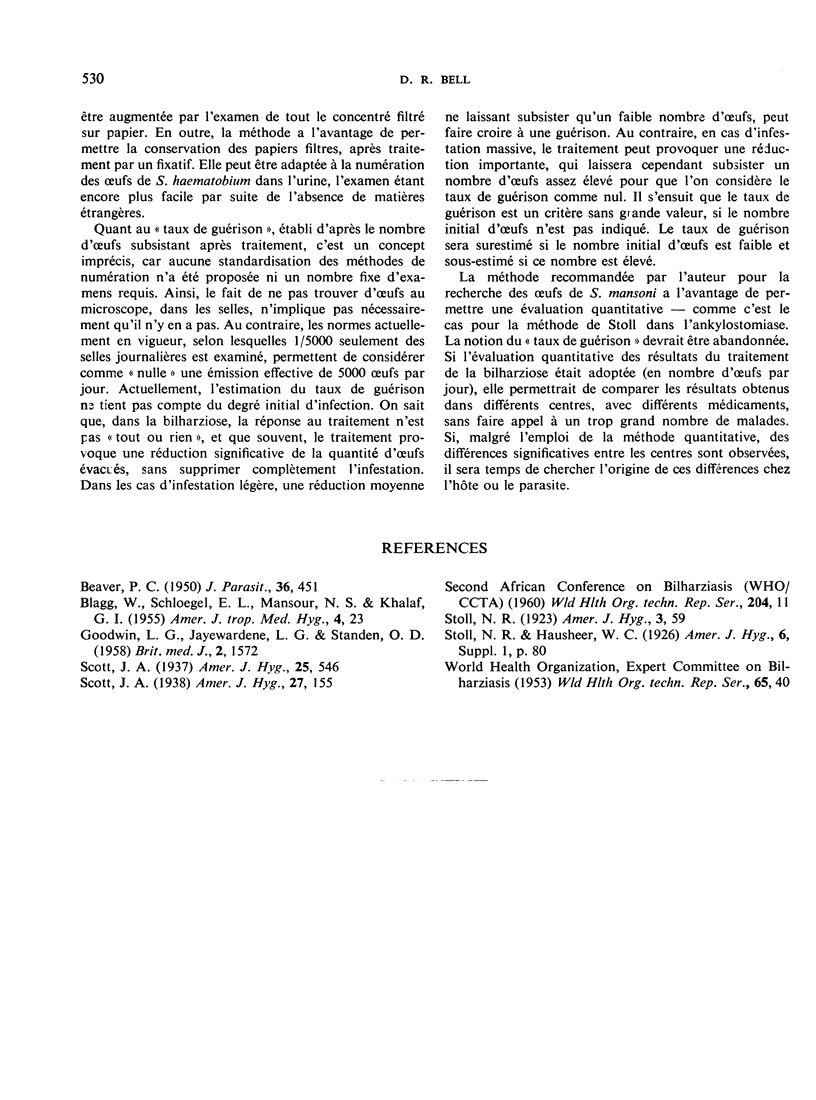
Images in this article
Selected References
These references are in PubMed. This may not be the complete list of references from this article.
- BEAVER P. C. The standardization of fecal smears for estimating egg production and worm burden. J Parasitol. 1950 Oct;36(5):451–456. [PubMed] [Google Scholar]
- BLAGG W., SCHLOEGEL E. L., MANSOUR N. S., KHALAF G. I. A new concentration technic for the demonstration of protozoa and helminth eggs in feces. Am J Trop Med Hyg. 1955 Jan;4(1):23–28. doi: 10.4269/ajtmh.1955.4.23. [DOI] [PubMed] [Google Scholar]
- GOODWIN L. G., JAYEWARDENE L. G., STANDEN O. D. Clinical trials with bephenium hydroxynaphthoate against hookworm in Ceylon. Br Med J. 1958 Dec 27;2(5112):1572–1576. doi: 10.1136/bmj.2.5112.1572. [DOI] [PMC free article] [PubMed] [Google Scholar]



